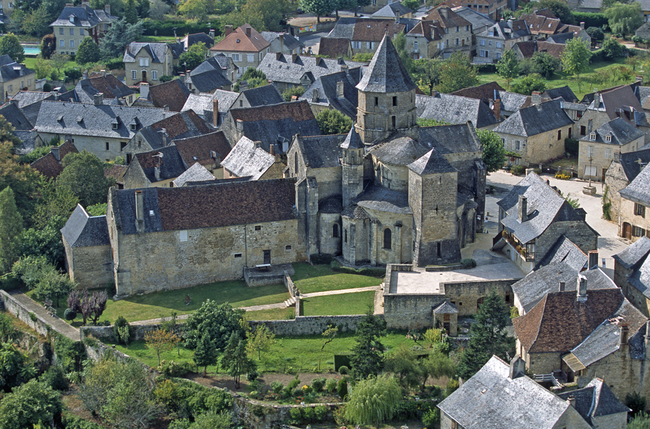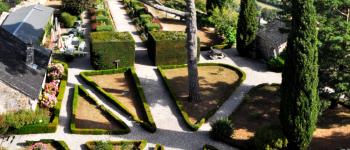
Saint-Robert is a medieval village, located on a limestone promontory, which has changed its name three times: Murel, Mont-Bel-Air and then Saint-Robert.
It has been classified "Plus Beaux Villages de France" since 1982.
Organized around a Benedictine monastery built by the disciples of Saint-Robert, the village experienced violent religious confrontations.
Nevertheless, a beautiful fortified Romanesque church from the 12th century remains from this period, as well as some seigniorial residences made of cut stone.
The village of Saint Robert is built around the church square, a strategic point in the village where many events are organized.
It was even the scene of a film shooting in 1983, "Des Grives au Loup" from the novel by Claude Michelet.
For decades, Saint Robert has been improving this area, firstly, in 1938, by demolishing the Halle, then, in 1953, by destroying the Maison Deyzac, in the centre of the square, thus allowing a better view of the church.
The church of Sainte-Marie, listed as a Historic Monument
Like most monastic monuments in the region, after a period of development in the 11th and 12th centuries, the Hundred Years' War and the Wars of Religion led to an irreversible degradation of the buildings and religious life.
This building was listed as a Historic Monument in 1862.
If the transept seems to date from the 11th century, the chevet was built in the 12th century. The choir is very developed with an ambulatory with 3 radiating chapels completed with 2 oriented absidioles built on the transept.
There are still about sixty capitals of the original decoration of the church today, 51 of which are still in place.
A large square tower, a veritable keep, surmounts the apsidiole of the chevet.
An octagonal lantern tower gives access to the bell tower, also octagonal in shape, which houses a bumblebee, a 16th century bell named Mary dedicated to St Georges.
During the revolution it was used as a wood store. It was used to store "walnut logs intended for the manufacture of gun wood for the Tulle arms factory". (Saint Robert and his Annals by V. Forot).
Since 1972, the exceptional acoustics of this building have made it possible to hold classical music concerts every summer.
Inside the church there is a 13th century Christ on the cross, of Spanish origin. According to legend it was brought back from Lepanto in 1571 after the victory of the Spanish Wings of Genoa and Venice over the Turkish Wing. Classified as an object in 1925. It is made of painted, gilded wood, fixed to a cross by 3 big nails. The slender Christ is animated by an important wiggle. It crosses the feet, the complexions are painted natural. The "Perizonium" is gilded. The wound on the torso is deep.
The Cross in wrought iron
The wrought iron Cross, dated from the 15th and 16th century, has been inscribed on the Historical Monument since 1927 and is decorated with the 6 attributes of the Passion:
- the cock, which reminds us of the denial of St. Peter,
- the crown of thorns, to mock Jesus,
- the spear, to pierce Jesus' right side,
- the hammer, to drive in the nails,
- pliers, to remove the nails,
- the ladder, to lower his body down.
Also to be seen
Saint-Robert is legally worth the detour for the castles of Beauroire and Aragon, the Pavillon de Noailles, built under Louis XII and which was the property of the Rocher family whose son wrote the novel "Jules et Jim" in Saint-Robert, the Maison Seguin, the Maison Verneuil, the chapel of Château Verneuil, the monastic building, the oldest building in the commune and dating from the 12th century, the medieval shops...
Below the village at the locality of Saint-Maurice, a miraculous fountain is the object of an annual pilgrimage on August 15th.
Saint-Robert Town Hall
Place de la Prévoté,
19310 Saint-Robert
Tel : 05.55.25.11.12
Translated with www.DeepL.com/Translator
(free version)





